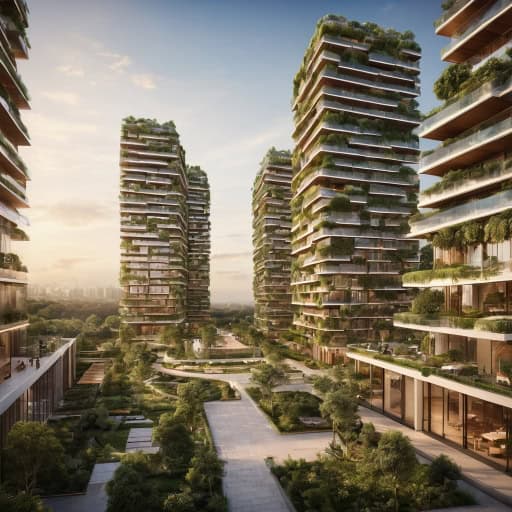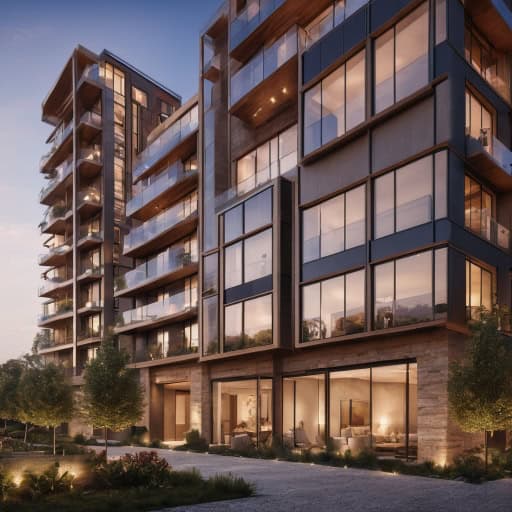Introduction
As cities strive to achieve sustainable growth, it has become clear that collaboration between cities and real estate developers is crucial. This partnership holds immense potential for creating vibrant, livable communities that benefit both the city and the developers. As a real estate developer, builder, and urban planner, I’ve experienced first-hand the importance of collaboration between cities and real estate developers, the challenges that come with forging these partnerships, and various strategies for effective collaboration. In this article I will share case studies of successful partnerships, the role of government policies, key considerations for cities, the benefits of sustainable development, and the tools and resources available to facilitate collaboration. By the end of this article, you will have a comprehensive understanding of how cities can collaborate with real estate developers for sustainable growth.
Sustainable Growth and its Benefits for Cities and Real Estate Developers
Sustainable growth is not just a buzzword; it is a fundamental pillar for the development of cities and the real estate industry. When cities and real estate developers work together toward sustainable growth, the benefits and positive impact can be significant.
For cities, sustainable development leads to increased livability, improved quality of life for residents, and enhanced economic opportunities. It allows cities to attract investment, create jobs, and foster innovation.
Real estate developers, on the other hand, benefit from sustainable growth by gaining a competitive edge in the market, attracting environmentally-conscious buyers, and contributing to the overall well-being of the community.
By prioritizing sustainable practices, cities and real estate developers can create a win-win situation that paves the way for long-term growth and prosperity.
Challenges in Forging Partnerships Between Cities and Real Estate Developers

While the potential benefits of collaboration between cities and real estate developers are clear, there are several challenges that need to be overcome. One of the primary challenges is aligning the goals and objectives of both parties. Cities may have different priorities, such as affordable housing and preserving green spaces, while developers may prioritize expanding their company and influence within the market and maximizing profits. Bridging this gap requires open and transparent communication, as well as a shared vision for sustainable growth.
Another challenge is the complexity of regulations and bureaucracy. Navigating the intricate web of permits, zoning laws, and environmental regulations can be time-consuming and costly for both cities and developers. Streamlining these processes and providing clear guidelines can facilitate collaboration and accelerate the implementation of sustainable projects.
Strategies for Effective Collaboration Between Cities and Real Estate Developers
To foster effective collaboration between cities and real estate developers, several strategies can be employed.
Firstly, establishing a platform for regular dialogue and consultation is essential. This can take the form of joint task forces, public-private partnerships, or advisory committees. By bringing together stakeholders from both sides, issues can be addressed proactively, and solutions can be developed collaboratively.
Secondly, cities and developers should explore creative financing options. This includes leveraging public-private financing mechanisms, such as tax incentives, to support sustainable development projects. Additionally, innovative financing models like impact investing and crowdfunding can provide alternative sources of funding.
Lastly, creating a supportive regulatory environment is crucial. Governments can introduce policies that promote sustainable development, streamline approval processes, and provide incentives for developers to incorporate sustainability measures. By adopting these strategies, cities and real estate developers can overcome barriers and unlock the full potential of their partnerships.
Case Studies of Successful Partnerships Between Cities and Real Estate Developers

Several cities around the world have successfully forged partnerships with real estate developers to achieve sustainable growth. One notable example is the partnership between Vancouver and the Southeast False Creek neighborhood. The city collaborated with developers to transform a former industrial area into a vibrant, mixed-use community with a focus on sustainability. This project incorporated green building practices, housing, and public spaces, resulting in a thriving neighborhood that is environmentally-friendly and socially inclusive.
Another inspiring case is the collaboration between Rotterdam and the De Rotterdam development. The city worked closely with the developer to create a sustainable and iconic building that serves as a model for urban regeneration. The project exemplifies how cities and developers can come together to create innovative solutions that address environmental challenges while enhancing the urban landscape.
The Urban Redevelopment Authority of Pittsburgh (URA) is an excellent example of how cities can collaborate with developers to improve their communities. URA works with developers to link them with viable sites, and strategic financing. They also assist with permitting and collaborate with their projects to create sustainable communities. This approach exemplifies the community benefits of strategic public/private participation programs, evidenced by numerous sustainably redeveloped communities throughout the city due to the efforts of URA to attract and collaborate with real estate developers to create vibrant, livable communities.
The Role of Government Polices in Fostering Collaboration for Sustainable Growth
Government policies play a crucial role in fostering collaboration between cities and real estate developers. By setting clear sustainability targets and providing incentives, governments can encourage developers to incorporate sustainable practices into their projects.
For instance, cities can implement green building codes that mandate energy-efficient designs or require developers to meet certain environmental standards. Governments can also offer land and financial incentives to developers who prioritize sustainable development, as the programs offered by URA. Additionally, governments can streamline the approval process for sustainable projects by creating dedicated departments or task forces that oversee sustainability initiatives.
By providing a supportive policy framework, governments can create an enabling environment that encourages collaboration and promotes sustainable growth.
Key Considerations for Cities When Partnering with Real Estate Developers
When partnering with real estate developers, cities must consider several key factors to ensure successful collaboration. It is important for cities to clearly articulate their vision and goals for sustainable development. This includes identifying key priorities, such as housing, renewable energy, or green spaces. By clearly communicating their expectations, cities can attract developers who share their vision and are committed to sustainable practices.
Cities should also prioritize transparency and accountability. It is essential to establish clear guidelines and performance metrics to measure the success of sustainable projects. Regular monitoring and reporting can help ensure that developers adhere to sustainability standards and deliver on their commitments.
The benefits of engaging the community throughout the partnership is also key. By involving residents and the business community in the decision-making process and seeking their input, cities can create a sense of ownership and ensure that development projects meet the needs of the community.
Benefits of Sustainable Development for Communities and the Environment

Sustainable development offers a wide range of benefits for communities and the environment. From a community perspective, sustainable development leads to improved quality of life, increased affordability, and enhanced social cohesion. It creates healthier and more livable neighborhoods with access to green spaces, public transportation, and essential services.
Sustainable development also promotes economic opportunities, such as job creation and local entrepreneurship. From an environmental standpoint, sustainable development reduces the carbon footprint, conserves natural resources, and protects biodiversity. It encourages the use of renewable energy, promotes energy-efficient buildings, and minimizes waste generation.
By embracing sustainable practices, cities and real estate developers can create a sustainable future that benefits both people and the planet.
Tools and Resources for Cities and Real Estate Developers to Facilitate Collaboration
To facilitate collaboration between cities and real estate developers, various tools and resources are available. One such tool is the LEED (Leadership in Energy and Environmental Design) certification system, which provides a framework for designing and constructing sustainable buildings. LEED certification is a globally recognized standard that encourages developers to incorporate energy efficiency, water conservation, and sustainable materials into their projects.
Another valuable resource is the International Council for Local Environmental Initiatives (ICLEI), which offers guidance and support to cities in their sustainability efforts. ICLEI provides access to best practices, training programs, and networking opportunities that enable cities to learn from each other and collaborate with developers.
Main Street America is an example of an organization that provides resources, funding, and support to developers who collaborate with cities to revitalize their communities.
Additionally, governments can establish dedicated green building councils or sustainability departments that provide technical expertise and resources to support sustainable development initiatives.
Conclusion: Unlocking the Potential of Partnerships for Sustainable Growth
Collaboration between cities and real estate developers is a powerful catalyst for sustainable growth. By working together, cities can achieve their sustainability goals while developers can gain a competitive advantage and contribute to the well-being of the community.
Through open communication, creative financing, and a supportive regulatory environment, cities and developers can overcome challenges and unlock the full potential of their partnerships. Case studies from around the world demonstrate the positive impact of collaboration, and government policies play a crucial role in fostering this collaboration.
By considering key factors and engaging the community, cities can ensure successful partnerships that result in vibrant, livable, and economically healthy communities. The benefits of sustainable development extend to communities, businesses, buildings and the environment, creating a brighter and more sustainable future for all.
Let us embrace collaboration and unlock the potential for sustainable growth.



